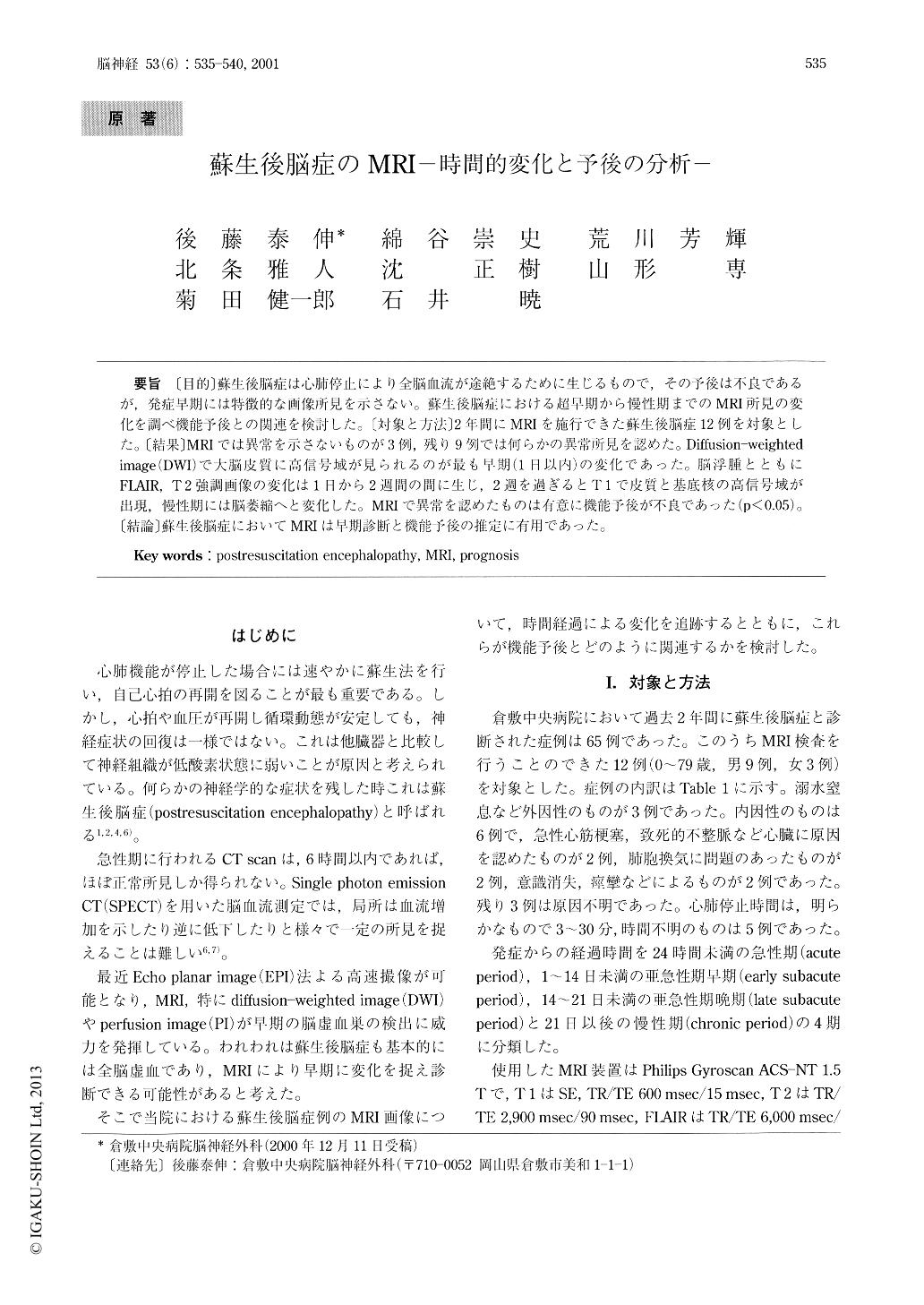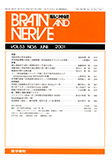Japanese
English
- 有料閲覧
- Abstract 文献概要
- 1ページ目 Look Inside
〔目的〕蘇生後脳症は心肺停止により全脳血流が途絶するために生じるもので,その予後は不良であるが,発症早期には特徴的な画像所見を示さない。蘇生後脳症における超早期から慢性期までのMRI所見の変化を調べ機能予後との関連を検討した。〔対象と方法〕2年間にMRIを施行できた蘇生後脳症12例を対象とした。〔結果〕MRIでは異常を示さないものが3例,残り9例では何らかの異常所見を認めた。Diffusion-weightedimage(DWI)で大脳皮質に高信号域が見られるのが最も早期(1日以内)の変化であった。脳浮腫とともにFLAIR,T2強調画像の変化は1日から2週間の間に生じ,2週を過ぎるとT1で皮質と基底核の高信号域が出現,慢性期には脳萎縮へと変化した。MRIで異常を認めたものは有意に機能予後が不良であった(p<0.05)。〔結論〕蘇生後脳症においてMRIは早期診断と機能予後の推定に有用であった。
Objective : The purpose of this study was to de-scribe the findings of sequential magnetic resonance imaging (MRI) in postresuscitation encephalopathy. Al-though its outcome is known to be overwhelming, but its acute findings by variable imaging methods are subtle and show only limited values. The correlation of the findings of MRI with clinical outcome were also analyzed.
Methods : Twelve patients with global cerebral an-oxia who underwent MRI with conventional and diffu-sion-weighted imaging were enrolled in this study.

Copyright © 2001, Igaku-Shoin Ltd. All rights reserved.


